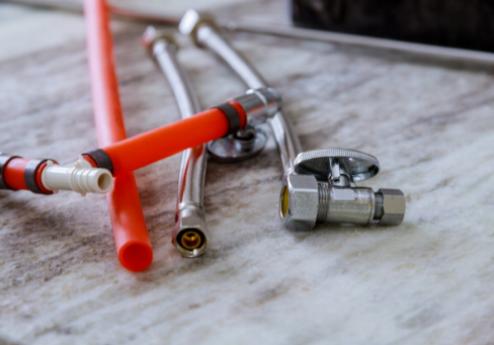Appliance Installation 101: Essential Tools and Techniques for Success
22 November 2025 by Billie O.Appliance installation can be a daunting task for many homeowners, but with the right tools and techniques, it doesn't have to be. In this article, we will cover the essential tools and techniques for successfully installing appliances in your modern home. From understanding the basics to ensuring proper electrical and plumbing connections, we will guide you through every step of the installation process. Additionally, we will provide maintenance tips and best practices to ensure the longevity of your newly installed appliances. So, whether you're looking to install a new dishwasher, refrigerator, or washing machine, this article has got you covered.

Understanding the Basics of Appliance Installation
Whether you're installing a new refrigerator, dishwasher, or washing machine, there are some basic principles that apply to all appliance installations. First and foremost, it's important to familiarize yourself with the specific instructions provided by the manufacturer. These guidelines will outline the necessary steps and precautions for installing the appliance safely and correctly. Additionally, it's crucial to take into account the necessary electrical and plumbing connections required for the appliance to function properly. Before beginning the installation process, it's essential to assess the designated space for the appliance. This includes ensuring that there is adequate ventilation and clearances for the appliance to operate efficiently. It's also important to consider any potential obstructions or obstacles that may impede the installation process. Furthermore, understanding the weight and dimensions of the appliance is crucial for proper installation. This includes ensuring that the flooring and surrounding area can support the weight of the appliance, as well as measuring to ensure a proper fit within the space. Lastly, understanding the basics of appliance installation also involves being prepared for any unexpected challenges that may arise during the process. This may include having the necessary tools and materials on hand, as well as being knowledgeable about common troubleshooting techniques. By having a clear understanding of the basics of appliance installation, you can approach the project with confidence and ensure that the appliance is installed safely and securely for long-term use.Preparing for Installation: Workspace and Safety
This includes identifying the location where the appliance will be installed and ensuring that there is adequate space and access to necessary utilities such as electrical outlets and plumbing connections. It is essential to clear the area where the appliance will be installed to provide ample room for maneuvering and working. Remove any obstacles or clutter that could hinder the installation process and ensure that there is proper ventilation in the area. Additionally, it is important to take safety precautions by turning off the power supply to the area where the appliance will be installed. This will help prevent any electrical accidents or hazards during the installation process. If the installation involves plumbing connections, it is important to shut off the water supply to prevent any leaks or potential water damage. It is also important to have the necessary safety equipment on hand, such as gloves, goggles, and a first aid kit, in case of any accidents or injuries during the installation process. By taking the time to properly prepare the workspace and ensure that safety measures are in place, you can help ensure a smooth and successful appliance installation process.Essential Tools for Appliance Installation
Here are some essential tools that you'll need for appliance installation:1. Screwdriver set: A good set of screwdrivers, including both flathead and Phillips head, will be indispensable for removing and installing screws during appliance installation.
2. Adjustable wrench: An adjustable wrench will come in handy for tightening and loosening nuts and bolts during the installation process.
3. Level: Ensuring that your appliance is installed level is crucial for its proper function and longevity. A reliable level will help you achieve a perfectly level installation.
4. Measuring tape: Accurate measurements are key to a successful appliance installation. A measuring tape will help you ensure that your appliance is positioned correctly in its designated space.
5. Pliers: Pliers will be useful for gripping and manipulating wires and other components during the installation process.
6. Wire stripper/cutter: If your appliance installation involves electrical connections, a wire stripper/cutter will be essential for preparing and connecting wires.
7. Pipe wrench: For appliances that require plumbing connections, a pipe wrench will be necessary for tightening and securing pipes and fittings. By having these essential tools on hand, you'll be well-prepared to tackle any appliance installation project with confidence and precision.